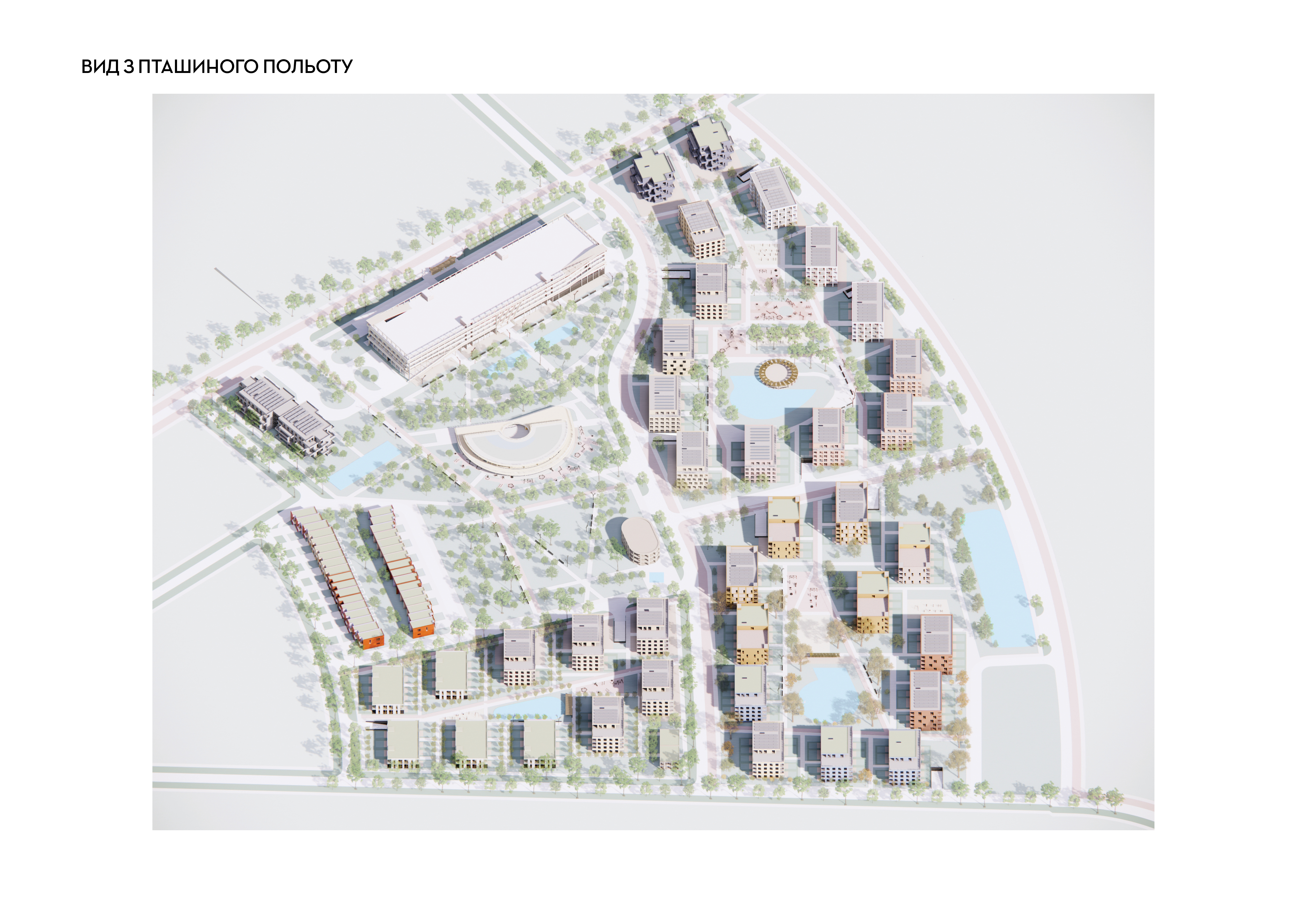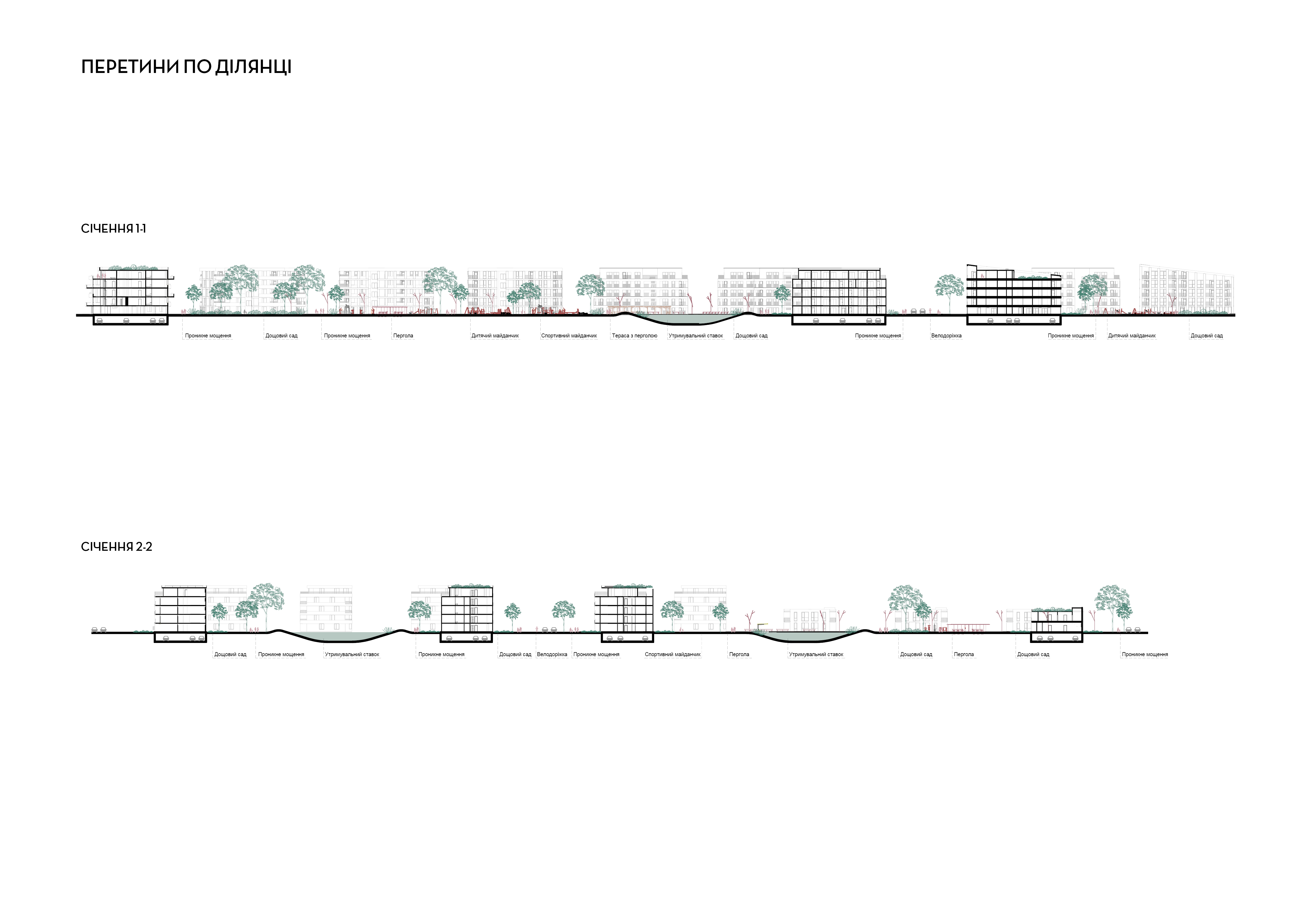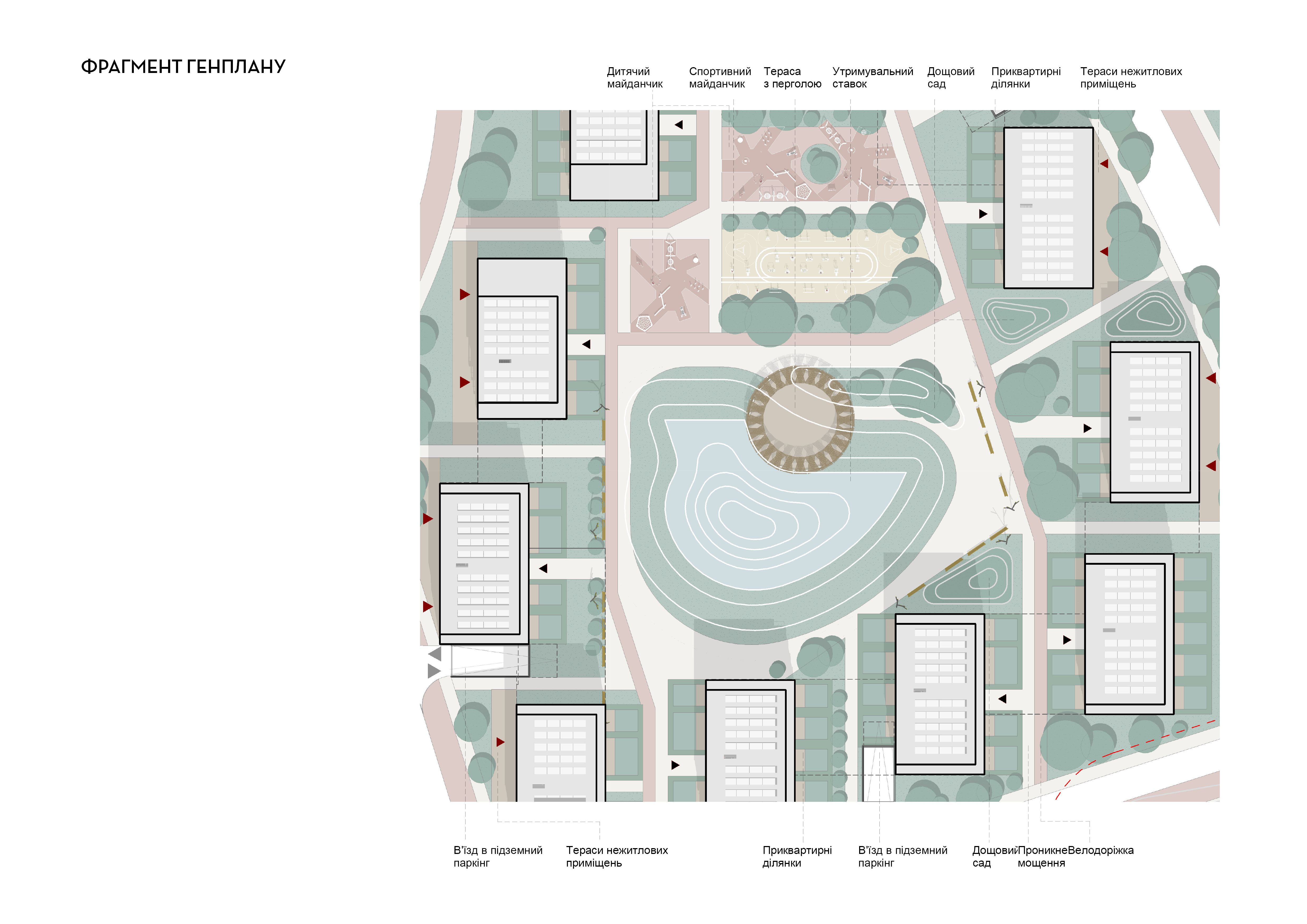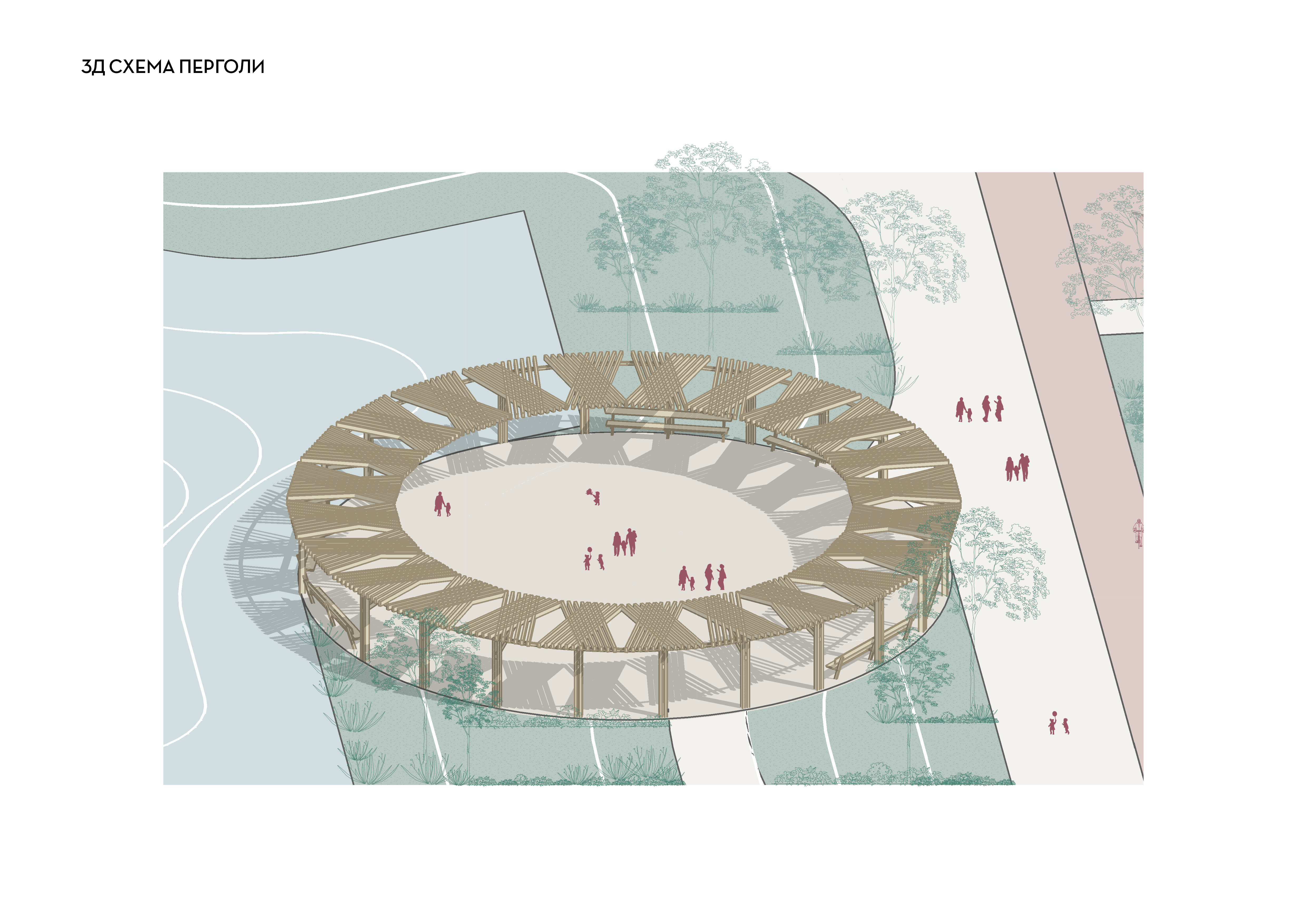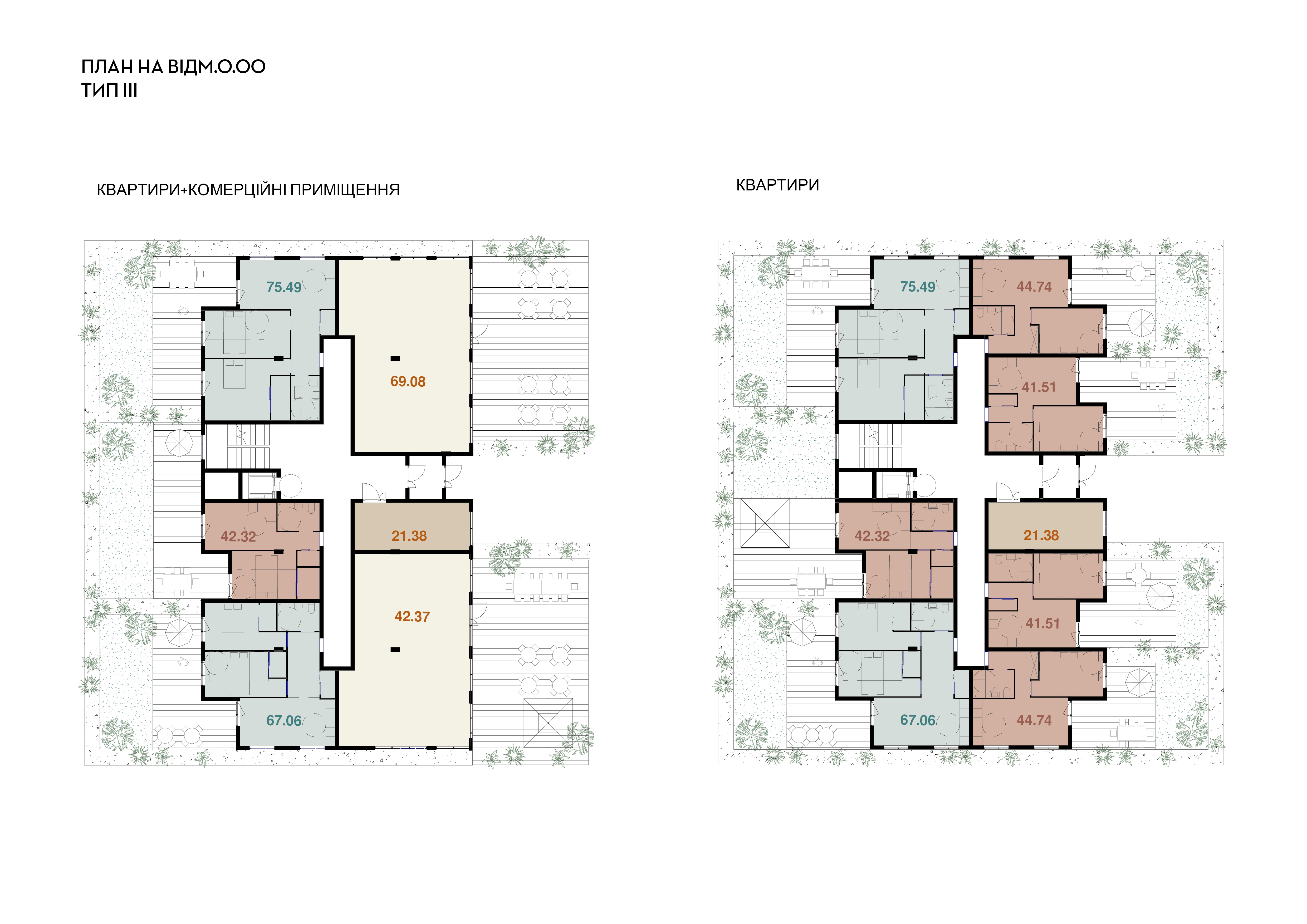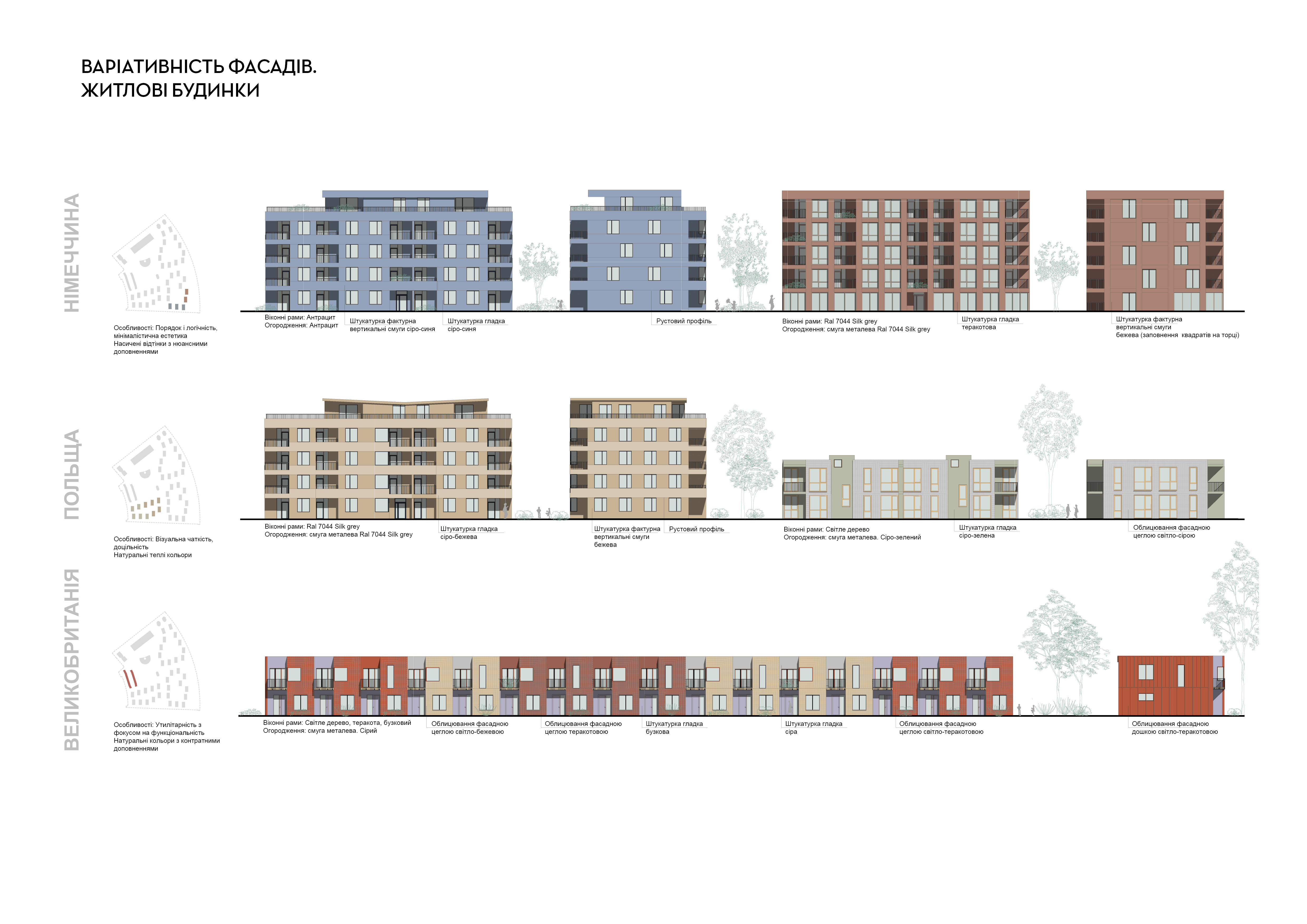NAMYSTO
Residential park "European Protsiv"
in Kyjiv region
Year: 2025
Categories: Residential, Public
Location: Kyjiv, Ukraine
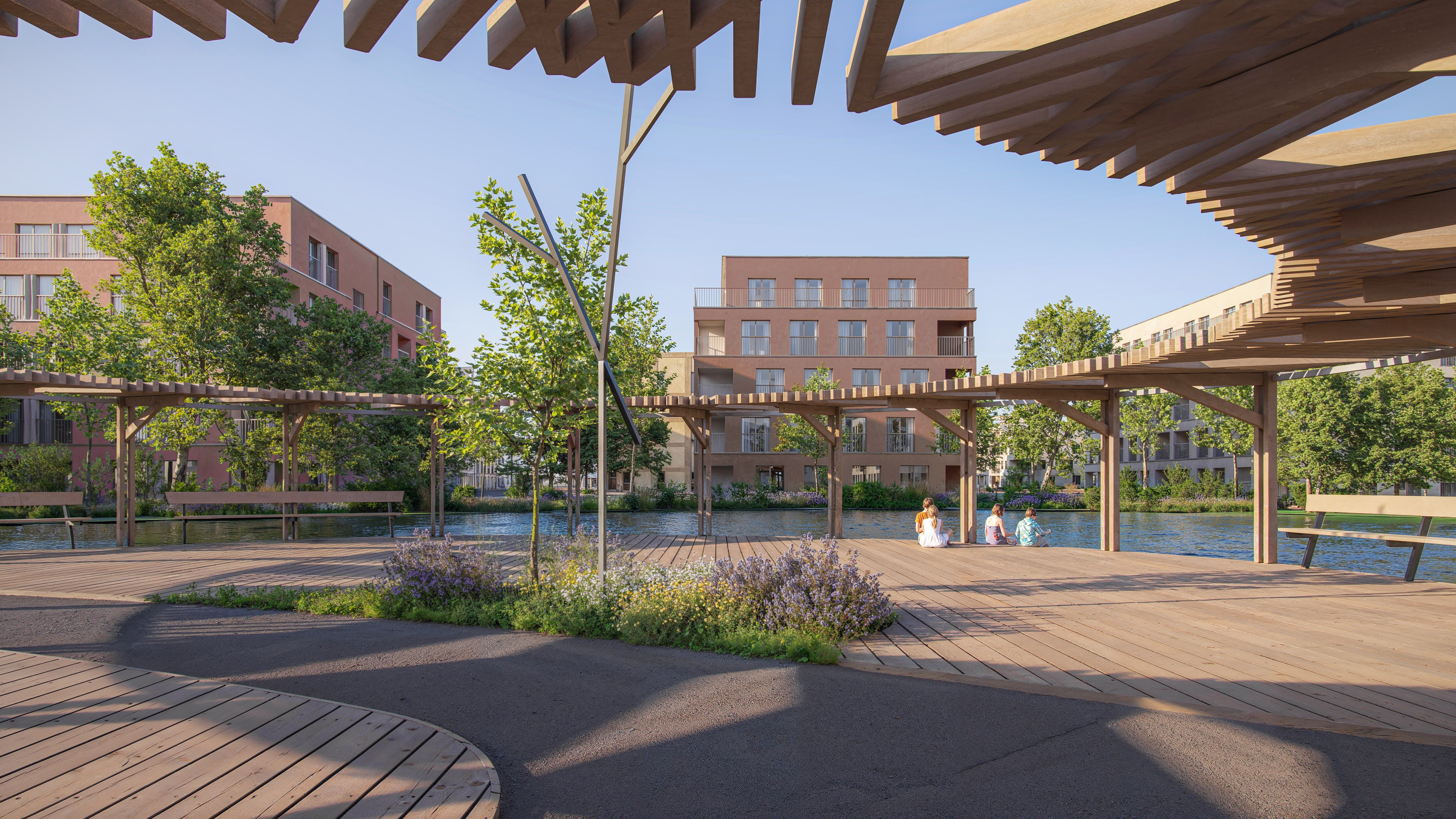
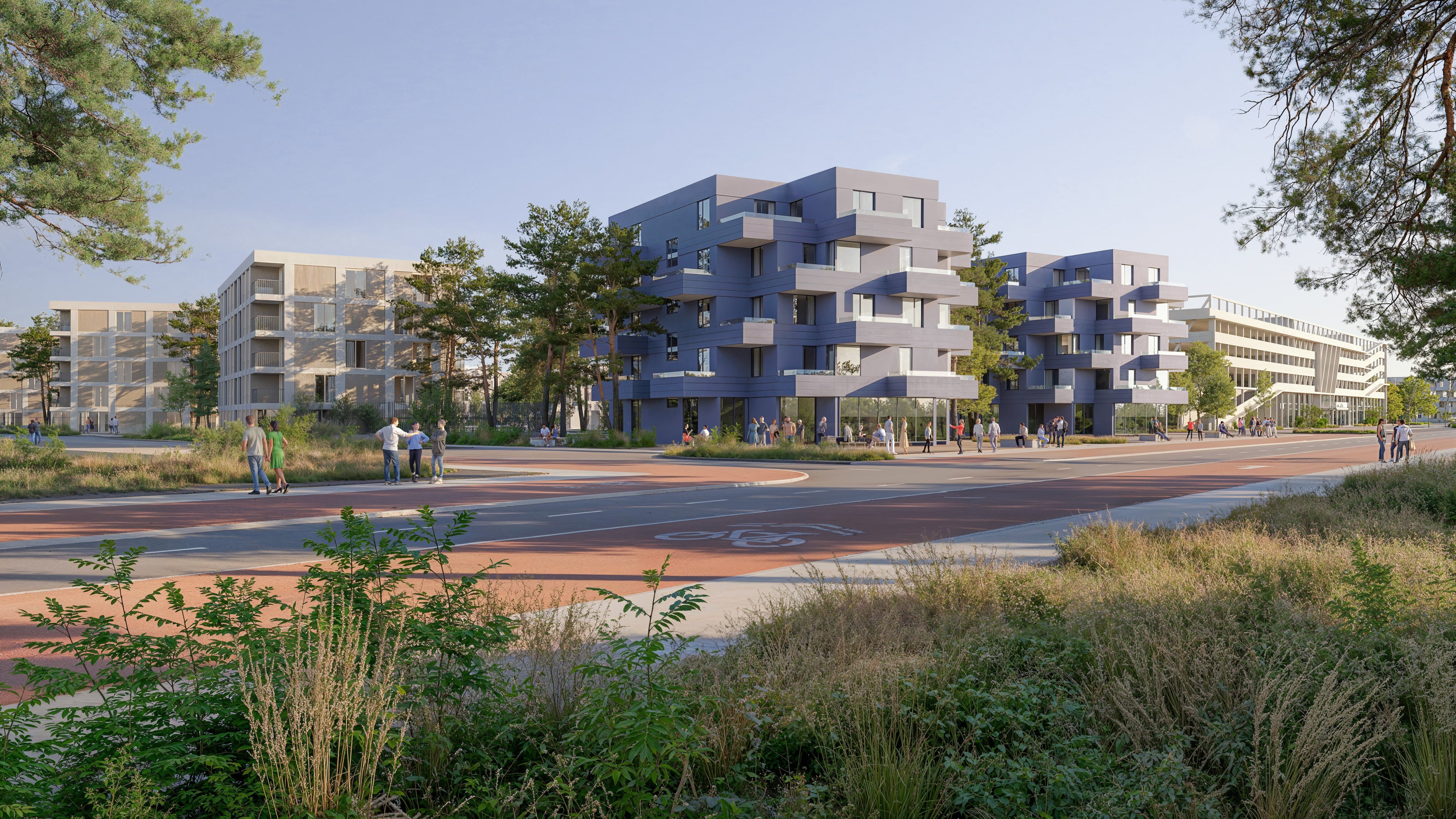
RECREATIONAL RESIDENTIAL PARK
Buildings among trees, not trees among buildings — this is the core concept of the recreational residential park project.
Given the park’s rural location, all buildings except for the townhouses are designed as detached units. There is no need to enclose residential blocks from the streets, as these are practically free from noise and emissions. All apartments will enjoy optimal sunlight, with windows oriented east or west. Each apartment will feature a spacious balcony or loggia, adding the quality of a private garden, typical of a family house.
The buildings are arranged around inner courtyards with public spaces for recreation and communication, completely free of cars.
IDENTITY
The project’s name — NAMYSTO (Ukrainian for necklace) — is symbolic and fully corresponds to its concept: to collect, heal, and bring back home the plans, dreams, and destinies of Ukrainians scattered across the world by war.
Namysto is one of Ukraine’s oldest traditional ornaments. Its beads were often made of materials brought from different countries: Austrian ducats for dukach pendants, Murano glass beads, Czech seed beads, coral, and pearls. The techniques, fashion, and styles intertwined with European trends through shared history and cultural exchange.
There are no major differences between the contemporary architecture of European countries, as they exist in nearly identical climatic and economic conditions, with interwoven histories and cultures. The United Kingdom, being somewhat more distinct and historically known as the birthplace of the townhouse, is represented in this project by a district of semi-detached two-story houses.
This area is located closest to the existing village buildings, adjoining the “Poland” district — starting with two-story and progressing to 4–5-story apartment buildings.
Each symbolic district is complemented by plant species characteristic of its respective country. In addition to landscaping, these plants can also be depicted in the design of shared residential interiors — as wall or tile artwork, plaster textures, or stone reliefs marking entrances and common areas.
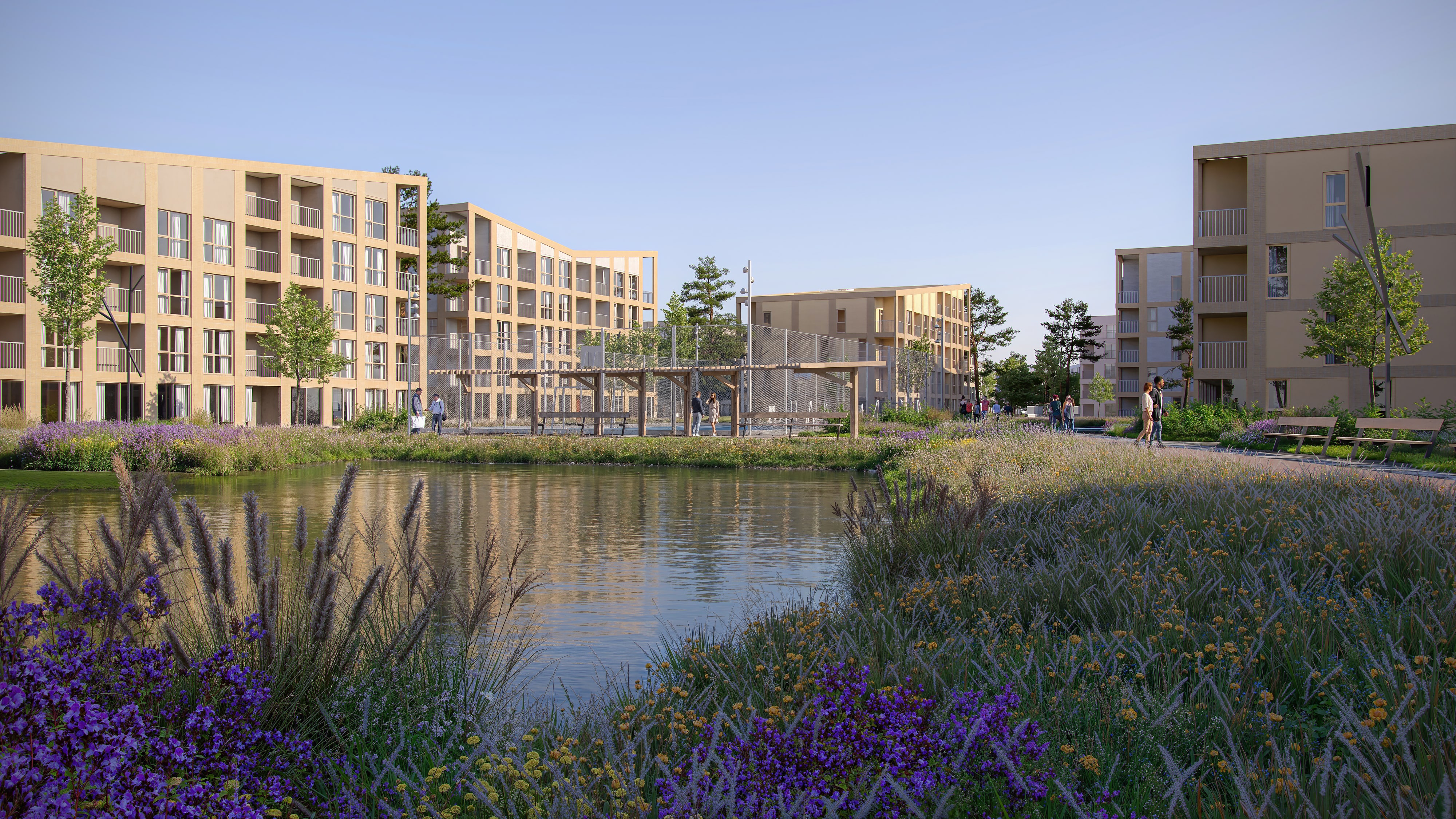
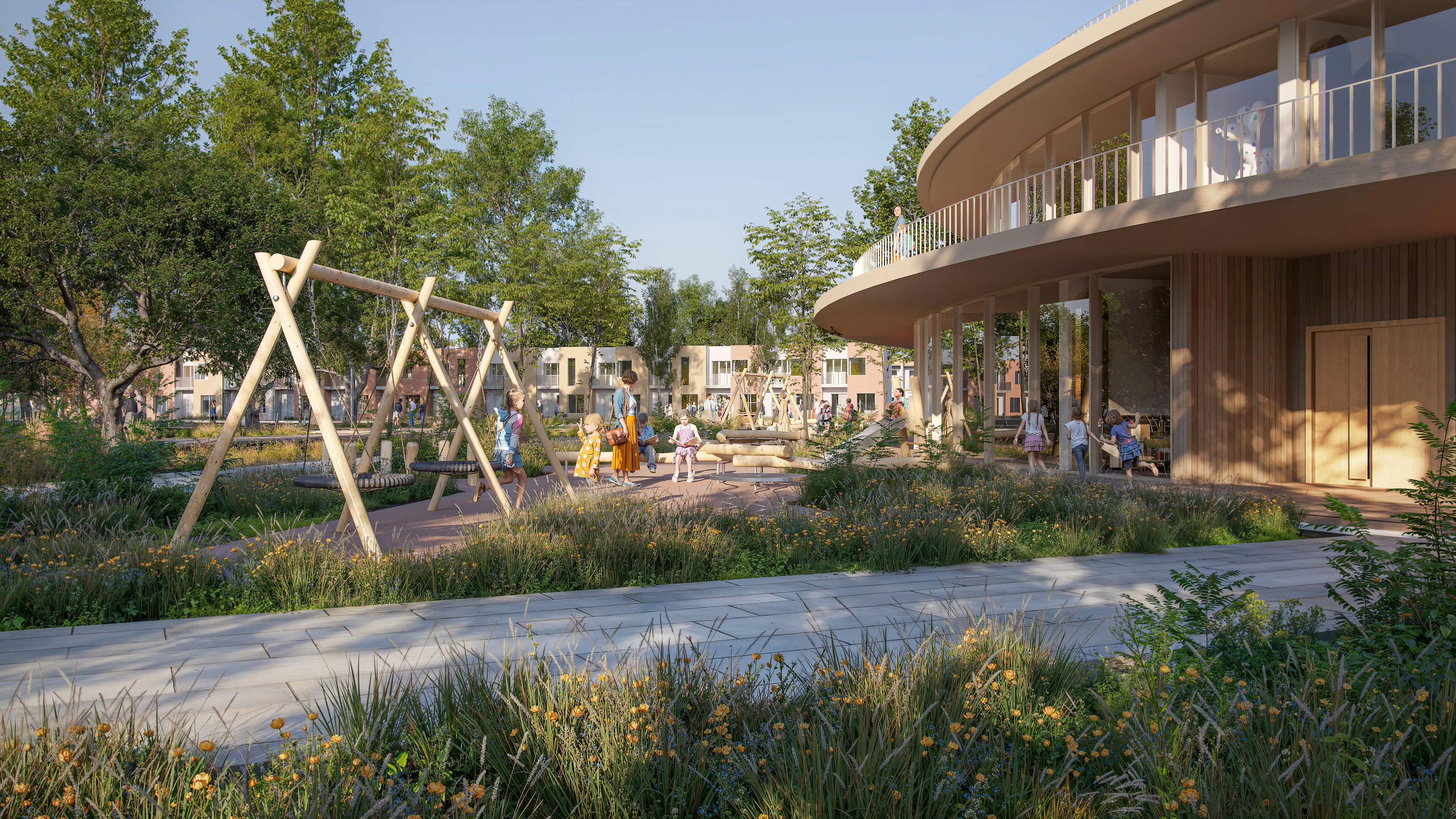

PROJECT EXPECTATIONS
The project will be sustainably integrated into its surrounding environment, ensuring harmony with both existing developments and open natural spaces. The planned residential quarters will create a new architectural landscape.
The selected materials and façade finishes will ensure optimal integration into the site context, supporting sustainable development while highlighting the residential character of the complex.
High-quality accessibility, smooth movement from the street to each home, and particular attention to residents’ needs will contribute to the project’s overall excellence.
ECOLOGICAL STRATEGY
The project incorporates a range of ecological strategies, including rainwater harvesting, solar panels on roofs, and optimally shaped rectangular buildings. Certain building sections extend toward green zones, dividing large central spaces into smaller, more intimate areas.
The development represents an interconnected network of infrastructure for rainwater collection, storage, reuse, and natural filtration, enhancing biodiversity through rain gardens and water-retaining parks.
Permeable paving on pathways and driveways absorbs water. Water collection and purification occur through landscape inflows and outflows, which residents can observe from walking trails and small bridges over wetland zones.
Gabion cascades serve for water aeration and filtration. During moderate rainfall, water is collected into ponds, lagoons, and shallow basins. In heavy rain, the excess flows through parapet overflow channels into additional landscape drains, trays, and ditches, forming a stormwater park system.
This bio-retention system — planted with local vegetation — collects, filters, stores, and returns water for reuse in irrigation and other non-potable needs.
Six Key Steps in the Rainwater Harvesting Process
Capture
Conveyance
Filtration
Storage
Distribution
Purification
Water collected mainly from building roofs and façades is filtered before being supplied for use in toilets, washing machines, showers, and sinks, or stored in underground tanks, from which it can be pumped to users.
Green roofs, rain gardens, lowlands, and water-retaining ponds consume rainwater and help replenish groundwater.
PERMEABLE PAVING AND RAINGARDENS
Permeable surfaces on sidewalks and driveways slow down water runoff, while rain gardens in lower areas absorb the first wave of stormwater through soil infiltration.
Retention ponds — small, permanent water basins with landscaped edges — provide additional capacity during heavy rains and support aquatic vegetation.
Bio-retention zones, shallow landscaped depressions covered with mulch and dense planting, slow and filter stormwater to prevent pollution and recharge groundwater.
Roadside swales act as temporary retention basins for surface runoff.
ADDITIONAL RAINWATER MANAGEMENT ELEMENTS
Sinks (gravel- or pebble-filled pits)
Depressions (collecting surface runoff)
Filtration slopes, “dry wetlands”, and permeable paving
These features help capture and collect rainwater.
“Dry wetlands” (also known as grassy wetlands) have shallow profiles that slow and distribute stormwater, allowing it to infiltrate through engineered soil and stone layers, which filter and support vegetation growth.
WASTEWATER TREATMENT
For small settlements, compact biological treatment plants may be used.
According to clause 5.11 of DBN V.2.5-75:2013, when discharging small separate stormwater systems into bodies of water not used for drinking purposes, it is permissible not to provide treatment for stormwater from small residential areas up to 20 hectares.
Team: Mykola Rybenchuk, Olena Rybenchuk, Mariia Moskalyuk, Kateryna Shklianka,
Visualizations - team Follow you home:
Alexander Ogranovich, Mariia Zasadniy
s







